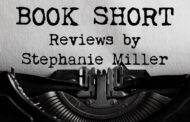Book Short
Becoming Madam Secretary
By Stephanie Dray

By Stephanie Dray
Berkley / 2024 / pp. 528
Even when the men in power respected you, being a professional woman in the 1930s was a hard slog. Frances learned that early in her twenties. Long before becoming Madam Secretary, she was a hungry social worker fighting against child labor and subsistence wages in the slums of Boston and New York City.
Even when the president of the United States respects and relies on you, and actually calls you a friend, being a professional woman in the 1930s- who is also a public figure – is near impossible. And yet! Native Mainer Frances Perkins, US Secretary of Labor from 1933 to 1945, and the first woman to hold a federal cabinet position, did much more than hold her own. She became one of Franklin Delano Roosevelt’s most trusted advisors. She was also a talented political strategist while staying true to her passion for helping working people.
Perkins is the mother of social security. Keep in mind, this is a program so radical at the time that no one thought it could pass. Of course, it has since become so ingrained in our democracy that most Americans believe it’s a right.
For Working People
Early in her career, Perkins is shocked that the Settlement House she just joined is offering a housekeeping school where poor girls can be taught how to “keep a home neat and tidy and attractive.” Perkins believed that poor people “didn’t live in squalor because they didn’t know how to keep a home neat. She knew they could not afford to keep a neat and tidy home and did not have time to do so when working seventy four hours a week without respite.”
In Dray’s fast-paced historical fiction, Perkins followed the inspiring words of her grandmother throughout her career. “If somebody opens a door of opportunity for you, it’s the Lord’s will. So walk right in and do the best you can.”
When asked why she studied economics, she says, “Because many people in America believe poverty is a moral problem having to do with sloth or some other sin we can blame on individuals. I believe poverty is an economic problem that can be solved…. And I intend to solve it.”
Historical perspectives of heroic struggles for equity and economic rights always have lessons for our current time. Especially now, when many put up with federal policies they don’t like just to protect their low tax rate.
Battling every day for her seat at the table and relentlessly fighting for the rights of the working poor, Perkins never loses her North Star of helping people rise out of poverty through fair work for a living wage. Dray uses Perkins’ own words whenever possible. This made me feel like I was in the room with Perkins, sharing her frustration and burning with her hopes.
Micro Shorts
“In the Country of Others,” by Leila Slimani
A young Frenchwoman Mathilde is eager for adventure and to escape her family’s dour life in Alsace. During WW2, her town welcomes a troop of Moroccan soldiers fighting with the resistance. She falls in love with handsome Amine. After the war they settle in a desolate village where Amine tries to make his rocky family farm a success.
As tensions mount between the locals and the French colonists, Amine and Mathilde both struggle with loyalties between family, self, and community. As landowners they are in contrast with the workers. Even as Amine is a generous boss and Mathilde opens a clinic in her home to help the local villagers. The entire novel is a beautifully woven tapestry of how otherness can bring love, friendship, fear, and hate.
Slimani brings in “place” like additional characters: The dusty, dry, farm. Back alleys in the city of Meknes, where young revolutionaries meet to plot resistance and deal arms. A local school run by nuns. The lush countryside of Mathilde’s hometown. The children’s swing hung on a tree. The hot, breezeless roof on summer evenings.
Applying a scientific approach to cultivating his family farm, Amine splices the branch of a lemon tree onto an orange tree. He tells his young daughter that it is an example of how French and Moroccan people can become one family, and she names the tree, “lemange.” As the country devolves into revolution, Amine “thought about how the fruit of the lemange tree was inedible. Its pulp was dry and its taste so bitter that it brought tears to his eyes. And the world of men is just like the world of botany, he thought. In the end, one species dominates another. One day the orange will win out over the lemon, or visa versa, and the tree will once again produce fruit that the people can eat.”
“And the Mountains Echoed,” by Khaled Hosseini
This is the third Afghanistan novel from the author of “The Kite Runner” and “A Thousand Splendid Suns”. Like his other novels, it’s a sweeping, generational epic about choice. It starts with the unbreakable love between motherless siblings in a remote village.
For three year old Pari, Abdullah is both mother and big brother. When they are separated, the novel spins into morally complex decisions made by some selfish, some greedy, some kind, and some careless people. There is so much sadness in this story – which is not surprising given the setting of war torn Afghanistan and how ordinary people are tossed about like salad mixings between the Russian and American invaders.
Like his other novels, the characters are beautifully drawn and driven by a need for understanding and connection as the story unfolds from Kabul to Paris to San Francisco, and the Greek island of Tinos.
“The Lock-Up,” by John Banville
Billed as a mystery, there isn’t much progress on the mystery itself. Still, the language is so beautiful. It makes this book worth reading anyway! A woman is found dead in her car parked in a Dublin, Ireland neighborhood lock-up (garage). During the investigation, the detectives are more focused on their personal lives – love, retirement, grief, resentment – than solving the crime. They detect clues, but don’t prove any connection. When the primary “bad guy” dies of other, seemingly unrelated causes, they give up the chase.
The solution is in the epilogue, which I found to be a bit of a stretch. Still, the mystery is not the point. This is an ode to the underdog, to facing the facts that you are not who you want to be, to the things we all do to ensure we can look at ourselves in the mirror each morning. An underlying German-Jewish revenge thread is almost overshadowed, but provides a powerful counterpoint to how evil inside us can fester, despite outward appearances.
“The Interpretation of Murder,” by Jed Rubenfeld
In real life, Dr. Sigmund Freud made one trip to the United States in 1909 and described the Americans he met as “savage” and blamed “his sojourn there” for physical ailments that had afflicted him for years before. What happened that turned the good doctor away in such disgust? This novel unwraps the puzzle in a wild and widely spun tale that includes turn of the century New York’s skyscraper-frenzy amid a social class beset by newly minted millionaires, the theories behind Hamlet’s “To be or not to be” speech, examination of the Oedipus complex, and the engineering feats that enabled the construction of huge suspension bridges connecting Manhattan and Brooklyn. Yep, that’s a lot of subplots!
The characters – including New York City herself – are finely tuned to the fast-paced, corrupt, and dynamic age of scientific, engineering, and social advancement. As a fine piece of writing, it’s a little all over the place. As a mystery, it’s a rollicking good time. I loved the two central characters who force the story forward and solve the crimes.





